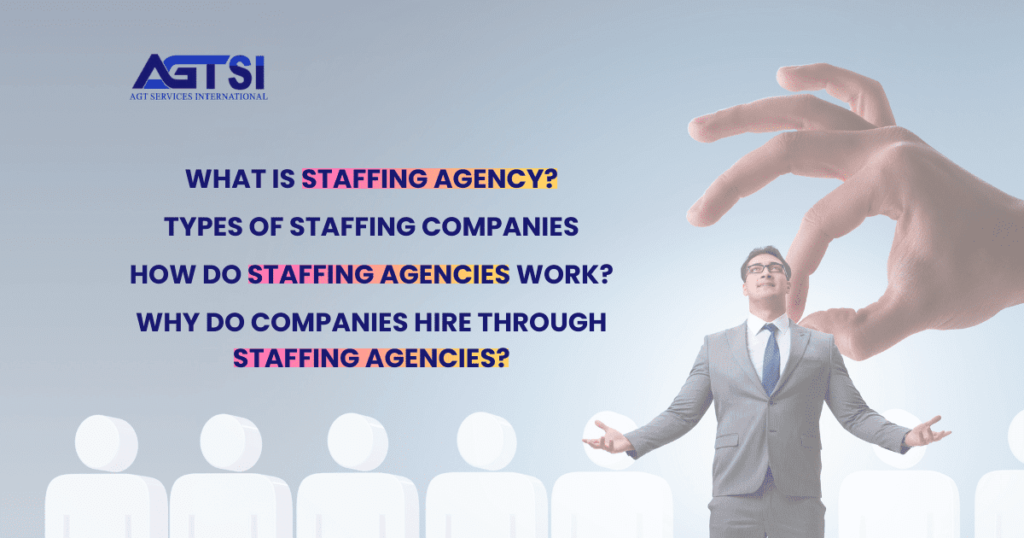Introduction:
Hiring new people is really important for a successful organization. It’s like the backbone that helps it stand strong. Making sure that the effort and money you put into hiring new employees is worth it is super important, especially in today’s competitive world. In this guide, we’ll explore how to figure out if your hiring efforts are paying off and give you helpful tips to make your hiring strategies better. Let’s find out the secrets to being successful in bringing in great people, keeping them, and getting the most out of their skills.
What is ROI in Recruitment?
ROI in recruitment, or Return on Investment, is like a report card for a company’s hiring efforts. It’s a way to see if the money spent on finding and bringing in new employees is worth it. Instead of just counting how many job positions are filled, it looks at the bigger picture – like how much value the company gets for every dollar spent on hiring.
In simple terms, ROI in recruitment helps businesses figure out if they are getting more money back from new hires than what they put into the whole hiring process. It considers things like making more money, getting work done better, and overall, how the company becomes more successful. This metric is like a tool that gives a full picture, helping businesses decide if the benefits of hiring new people are worth the costs of finding them in the first place.
To break it down even further, ROI in recruitment is a way of checking if the strategy used for hiring is doing a good job. The goal is to make sure that the money and effort put into finding and bringing in new employees is actually helping the company make more money overall. It’s like looking at the costs before doing a detailed analysis to see if the company is on the right track with its hiring efforts.
Recommended: Recruitment Agency Fee Structure
ROI Recruitment Formula for Calculation:
It’s important to figure out if your hiring process is working well, and one way to do that is by calculating recruitment ROI (Return on Investment). Here’s a simple formula you can use: (Lifetime Value of an Employee) / (Cost to Hire Employee + Cost to Retain Employee) for individual ROI assessment. Divide the Lifetime Value of an Employee by the sum of the Cost to Hire the Employee and the Cost to Retain the Employee. This formula helps you see how much you’re getting back for the money you spend on hiring.
The Lifetime Value of an Employee includes things like increased revenue, better profits, and improved team productivity. To get an accurate calculation, you need to gather good data and make sure it aligns with your organization’s goals. Keep track of the right numbers, and you’ll have a clear picture of how well your recruitment efforts are paying off.
Recommended: Art of Negotiating Recruitment Agency
How to Calculate Recruitment ROI? | Key Variables Influencing Recruitment ROI
Calculating recruitment ROI requires considering important contributing factors for success. Explore these factors further to gain a better understanding of their importance.
1. Cost to Hire
Hiring people for a job is important, and it involves spending money on various things. These include advertising the job, paying fees to recruitment agencies, doing background checks, and covering interview costs. On average, in the United States, hiring someone can cost about $4,700.
Usually, about 15% of the money set aside for Human Resources is used for hiring. When you add in other things like benefits, the total cost of hiring a new employee can be as much as 40% of their salary. It’s also good to know that it takes three to eight months for a new employee to go from being hired to doing their job really well. Understanding and managing these costs is important for companies that want to make the most out of their hiring.
Recommended: 10 Steps Saudi HR Managers Can Follow to Choose the Best Manpower Recruitment Agency
2. Time to Fill
How long it takes to fill a job is important in calculating recruitment ROI. We call this “time to fill.” It’s the time it takes to find someone and hire them for an empty job. Usually, a regular job in the United States takes around 36 to 42 days.
If a job stays empty for a long time, it can cause problems. People might not work as well, the workload for those already working can get heavier, and the company might lose money. To make things better, companies can use technology like automated systems and special software to speed up the hiring process.
It’s important for companies to understand and control how long it takes to fill a job. If they can fill positions faster, it helps the company do better. It makes work more efficient, saves money, and makes the whole hiring process more successful.
Recommended: What is Permanent and Contract Recruitment?
3. Quality of Hire
In calculating recruitment ROI, 3rd most important factor is finding the right people. Finding the right people with the right skills, who fit well with the company culture, and who have the potential to grow is important to make the most out of hiring. Focusing on getting high-quality candidates helps the employees do better at their jobs and stick around longer, making the hiring process more successful.
A report from LinkedIn’s Global Talent Trends says that 88% of people who work in hiring think that the most important thing in ROI recruiting to measure how well hiring is going is looking at the quality of the people they hire. Figuring out the quality of a hire means figuring out how much the new employee is helping the company and making progress toward its long-term goals. Even though things like how well someone does on the job and if they fit in with the team are hard to measure, you can calculate the Quality of Hire by adding up some percentages and dividing by the number of things you’re looking at.
Quality of hire is all about measuring how much value a new employee brings to the company and how they contribute to its long-term success. It’s super important because it helps us see if the hiring process is working well. Even though it’s kind of hard to measure and different companies might see a good employee in different ways, looking at the quality of hire helps us know if our hiring process is doing a good job.
Recommended: How to Start a staffing Agency with No Money from Home?
4. Employee Retention
The fourth most important factor in calculating recruitment ROI is Employee retention. Keeping employees happy and ensuring they stay with a company is important for making the most out of hiring new people. A company should keep its talented employees instead of always finding and training new ones. When many people leave their jobs, it costs the company more money to hire and train replacements, making the work less efficient.
To help with this, companies can use smart strategies to keep their employees happy and satisfied. This includes things like giving opportunities for career growth, making sure the workplace is a positive and friendly environment, and offering good pay and benefits. By doing these things, companies can lower the number of employees who leave and, in the end, get more value from their hiring efforts. It’s also important for companies to keep an eye on how many new employees stick around for a while, as it helps them understand if their hiring process is working well and if the employees are happy with their jobs.
5. Employee Productivity and Performance
In calculating recruitment ROI, Employee Productivity and Performance are 5th important factors. How well workers do their jobs really matters for a company to do well. When employees are happy and do their best, it helps the company make more money and creates a good workplace atmosphere. This is important for the company’s overall success.
One way to ensure employees do well is to give them ongoing training and let them know what’s expected at work. Also, having a nice and supportive workplace is important. According to a report by Gallup, teams where employees are really involved are 21% more successful. Companies that focus on these things can see their employees doing better at their jobs, being happier, and, in the end, making the company more successful.
Recommended: What is a Manpower Recruitment Agency?
6. Training Costs
A. Investing Money in New Employees
When a company hires new people, they have to spend money on things like training materials and external programs. These costs are part of the overall money the company puts into getting new employees started.
B. Getting Used to the Job
It takes time for new employees to learn everything about their job, the company, and how things work. During this time, they might not be as good at their job as someone who has been working for a while.
C. Using Time and Resources
The company spends time and resources on training, which could be used for other important things. Good training programs can help save time and resources by making the learning process faster.
Recommended: What is Staffing Agency?
7. Opportunity Costs
Opportunity costs in hiring mean the money a company might lose if they don’t fill a job quickly. Imagine a game where you have to decide between different choices. In this case, the choice is whether or not to fill a job. If you wait too long, the company could miss out on making money. When a job is empty, it causes problems for the company. Calculating Recruitment ROI Opportunity Costs is the 7th important factor. In an article, the HR experts discuss these opportunity costs and mention different things that can go wrong.
A. Productivity Loss
If there’s a job that hasn’t been filled, it means that some important tasks and duties aren’t getting done. This can make the company less productive and affect how much money it makes.
B. Delayed Revenue Generation
Every day a job is empty means the company is losing money. If the job helps make money, the longer it’s not filled, the more money the company misses out on.
C. Impact on Existing Employees
Current staff members might have to do more tasks because there is a job opening. This could make them feel really tired, less happy, and might even affect how much work they can get done.
D. Customer Service and Satisfaction
An empty job, especially in customer service, can make the service not as good. This might make customers unhappy, which can hurt the company’s name and maybe even make clients leave.
E. Project Delays
Not having enough people for jobs can mess up projects that are already happening or make it hard to start new ones. When projects are delayed, it can cause a chain reaction, messing up schedules and making the company less efficient and profitable.
When calculating recruitment ROI, it’s important to understand the opportunity costs linked to long job vacancies. When a position stays empty for a while, it means the company misses out on chances to make money. Time is valuable, and every moment a job is unfilled, the company loses the chance to earn. So, it’s really important to hire quickly and efficiently. By making the hiring process faster and reducing the time a job is empty, companies can ensure they’re working at their best and getting the most out of their Recruitment ROI.
Recommended: Types of Recruitment Agencies
8. Cost of Placement
When we talk about the cost of hiring someone for a job, it means the money spent to find the right person for that specific role. Normally, when companies want to hire someone, they put out a lot of ads, both online and offline, to attract people who might be interested in the job. The expenses for this include the cost of posting the job, paying a recruitment agency, and other related costs.
But, if a company hires a recruiter, it can be more efficient. Recruiters know a lot about the industry and have a big network of potential candidates. This means they can quickly find qualified people without having to spend a lot of time and money on lots of ads. This efficiency in hiring helps to save money by reducing the costs linked to having a job open for a long time.
9. Software Expenses
In today’s world, when companies hire new people, they often use computer programs and online tools. Some examples of these tools are applicant tracking systems (ATS) and candidate assessment tools. These technologies help make the hiring process smoother.
The cost of using these tools is an important part of Recruitment ROI (Return on Investment). It includes the money spent on getting, using, and keeping these tools. Even though using technology can make hiring easier, it also means spending money. Recruiters who know how to use these tools well can use them smartly to find and evaluate job candidates.
Recommended: How to Start a Recruitment Agency?
10. Integration into ROI Calculation
The money spent on finding the right person for a job includes both the cost of putting out job ads and using special computer programs. This total amount of money needs to be compared to the benefits we get from hiring someone. If we can find the right person quickly and save time in the process, it helps balance out these costs and make the whole hiring process more successful.
11. Time Investment
How Long It Takes to Get Good at a New Job?
When someone starts a new job, it’s important to see how quickly they become really good at it. If it takes a long time for a new employee to do their job really well, it means the company has to spend a lot of time and resources without seeing results right away.
How it Affects the Team’s Work?
If the training period is too long, it can mess up the normal way the team works. This can make the team not work as well, and the people who already work there might have to do more work than usual.
The Cost of Missed Opportunities
When you spend time on training, you’re not spending that time doing the actual job. This is a big deal to think about when you want to see how training affects how well the whole company does its work.
Recommended: How To Choose The Right Recruitment Agency For Your Business?
How do Training Costs and Time Influence Recruitment ROI?
1. Analyzing Training
When a company spends money on training, they need to think about whether it’s worth it in the long run. It’s like deciding if buying something is a good deal. A detailed analysis helps figure out how much the training helps the company make more money.
2. Getting the Best Employees
If a company has good training programs, they are more likely to have employees who do a great job. Spending time and money on good training means the employees will be better at their jobs. This is important because it helps the company make more money in the end.
3. Keeping Employees Happy
When employees get good training and support when they start working, they are more likely to be happy and stay with the company. This is good for the company because it means they don’t have to spend as much money finding and hiring new people all the time.
Strategies to Optimize Training Costs and Time for Better Recruitment ROI:
- Implementing efficient onboarding programs.
- Providing clear training materials and resources.
- Leveraging technology for training purposes.
- Tailoring training programs to align with organizational goals.
- Continuous evaluation and improvement of training processes.
However, how much money and time we spend on training is super important for how well we do when hiring new people. If we use our resources wisely, it helps the company do better in the long run. This means employees learn their jobs faster, stick around for a longer time, and help the company achieve its goals.
Recommended: Manpower Recruitment for Malayasia
Recruiter’s Role:
Recruiters are really important in making the job search process better. They know how to find the right people for jobs quickly, so companies don’t have to spend a lot on advertising. Recruiters also use special computer programs to help them, making the whole hiring process work better.
Recommended: Manpower Recruitment for Saudi Arabia
Strategies to Improve Recruitment ROI
1. Enhance Candidate Evaluation Methods
Use organized interviews, skill tests, and behavior assessments to make hiring better. A study from the Harvard Business Review found that structured interviews are 81% better at guessing how well someone will do at work. If you use these ways to judge candidates, it helps you pick people who will bring a lot of value to your company for a long time, making your hiring decisions pay off even more.
2. Reduce Time to Hire
Making sure you hire people in a smart way is really important for getting the most out of your recruitment efforts. Time matters a lot because taking too long to fill a job can lead to less work getting done and less money coming in. Research shows it takes about 42 days on average to find the right person for a job. To speed things up, it’s helpful to use technology like applicant tracking systems and pre-screening tools. These tools make the hiring process faster, so you can bring in the best people more quickly. This is a smart way to make sure you don’t lose out on productivity and money because a job is empty for too long.
Recommended: Manpower Recruitment Agency for Qatar
3. Build Trust During Onboarding
Making sure new employees have a good start is really important. When a company has a well-organized process to welcome and help new people, it makes them more likely to stay for a long time. Studies show that employees who go through a structured onboarding program are 58% more likely to stick around for at least three years.
To create a positive experience for new employees, it’s crucial to have a thorough introduction, assign mentors to help them, and create a friendly work environment. This helps build trust and engagement right from the beginning. When new employees feel supported and welcomed, it sets a strong foundation for them to be happy and productive. This, in turn, leads to more employees staying with the company, making the company’s investment in hiring worthwhile.
Recommended: Manpower Recruitment Agency in UAE
4. Increase Employee Engagement Through Ongoing Training
Make sure you keep learning to get better at your job and stay interested. When people are interested in their work, they do better, and that helps the company a lot. Studies say that if a company helps its employees learn and grow, almost all of them are happy to stay there for a long time. Companies can do this by having workshops, online classes, and mentoring programs. When employees feel supported like this, they work harder and do a great job, which is good for the company.
Recommended: Manpower Recruitment Agency for Oman
5. Decrease Hiring Costs
Use social media and ask your employees to help find and hire new people without spending too much money. When your current employees recommend someone, it usually takes less time to hire them compared to people who apply through job websites. It’s important to find affordable ways to bring in new talent and make the most out of your hiring investments. By using social media sites like LinkedIn and Twitter, you can connect with more qualified candidates.
Employee referrals, where current employees suggest someone they know, are a good way to save money and time. Studies show that referred candidates often stay in the job longer, and it takes less time to bring them on board. According to a study by Jobvite, using your employees’ connections and having a referral program can help you save money when hiring, making your hiring investments even more valuable.
Recommended: Manpower Recruitment Agency in Bahrain
Final Thoughts:
In summary, figuring out Recruitment ROI (Return on Investment) is like solving a puzzle with many pieces. To do it well, you need to have a smart plan. Understand the important factors, follow the step-by-step guide, and make things better as you go. This will help companies make their hiring process work really well and get great results from it. Keep in mind that hiring people is an ongoing thing, so it’s important to keep checking and making things better. Doing this will help your organization grow and be successful.
By using these ideas, you can not only figure out Recruitment ROI well but also make your company better at finding, keeping, and getting the most from really good employees.
Recommended: Manpower Recruitment for Korea
Recommended: Manpower Recruitment for Germany




















